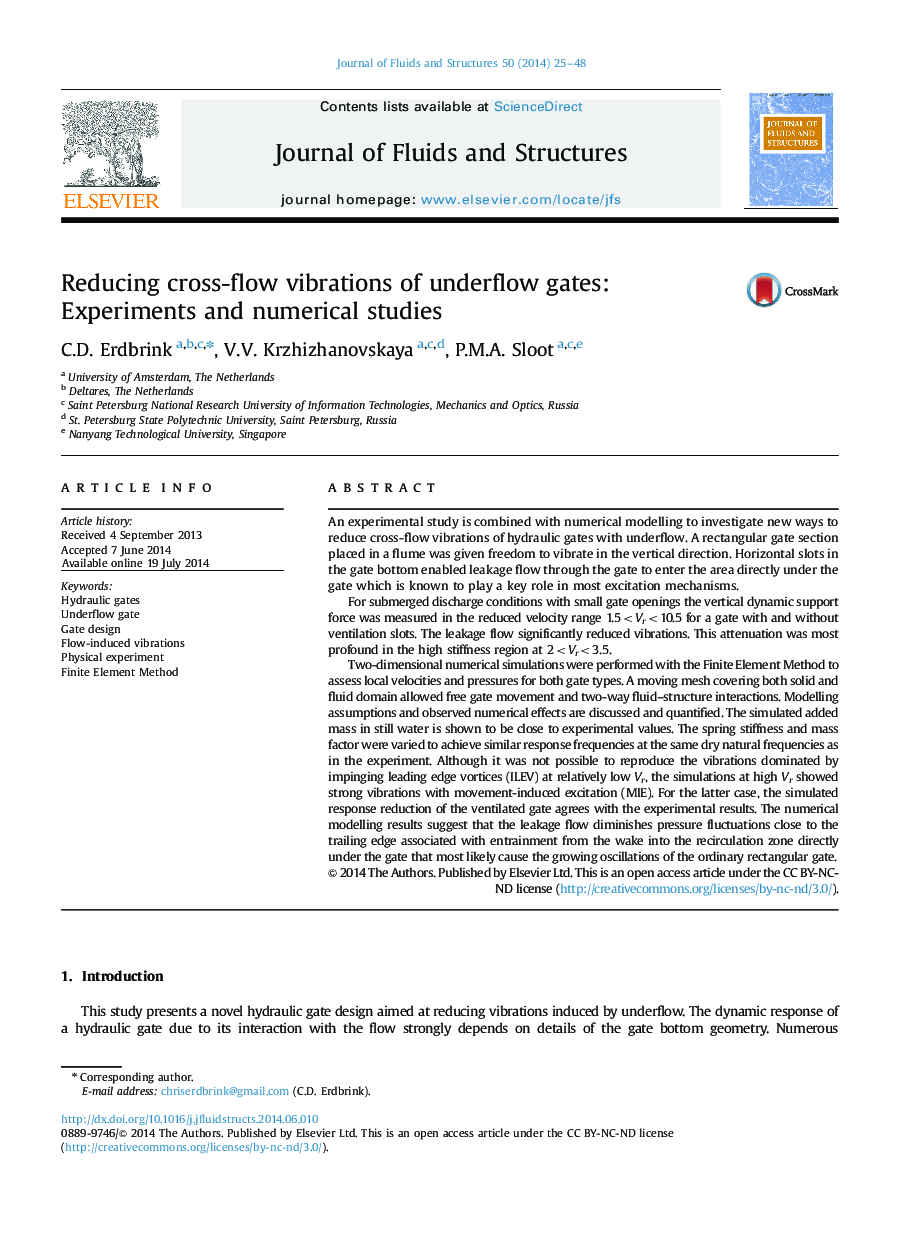| Article ID | Journal | Published Year | Pages | File Type |
|---|---|---|---|---|
| 7176062 | Journal of Fluids and Structures | 2014 | 24 Pages |
Abstract
Two-dimensional numerical simulations were performed with the Finite Element Method to assess local velocities and pressures for both gate types. A moving mesh covering both solid and fluid domain allowed free gate movement and two-way fluid-structure interactions. Modelling assumptions and observed numerical effects are discussed and quantified. The simulated added mass in still water is shown to be close to experimental values. The spring stiffness and mass factor were varied to achieve similar response frequencies at the same dry natural frequencies as in the experiment. Although it was not possible to reproduce the vibrations dominated by impinging leading edge vortices (ILEV) at relatively low Vr, the simulations at high Vr showed strong vibrations with movement-induced excitation (MIE). For the latter case, the simulated response reduction of the ventilated gate agrees with the experimental results. The numerical modelling results suggest that the leakage flow diminishes pressure fluctuations close to the trailing edge associated with entrainment from the wake into the recirculation zone directly under the gate that most likely cause the growing oscillations of the ordinary rectangular gate.
Related Topics
Physical Sciences and Engineering
Engineering
Mechanical Engineering
Authors
C.D. Erdbrink, V.V. Krzhizhanovskaya, P.M.A. Sloot,
